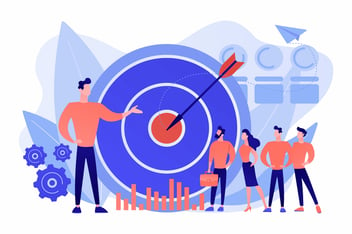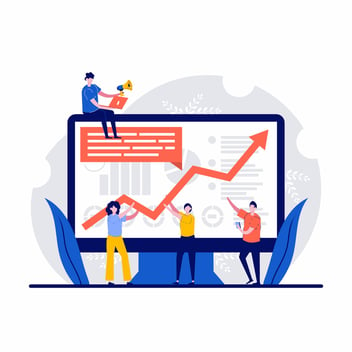Top 3 Reasons Why Your B2B Company Has Limited or No Business Traction

When it comes to scaling a mid-size SaaS company, you can break long-term growth into three major stages: traction, profit, and scale. Passing through each stage requires a different process and a varying collection of resources.
Despite demonstrated demand, many B2B SaaS founders struggle with limited business traction. Even with a validated product, expanding into new markets has proven to be a difficult task.
In this blog post, we will explore three of the most common reasons why mid-size B2B SaaS companies experience low business traction and provide tips on how to overcome these market expansion challenges.
1. There Aren’t Enough Resources Being Dedicated to Market Expansion
In order to increase business traction in new markets, it’s vital that adequate financial resources are being allocated towards achieving primary objectives. This means making sure there’s a dedicated team in place whose sole focus is company growth.
Ideally, this team should be responsible for brainstorming new sales initiatives, testing different approaches, and analyzing the results. Without this level of dedication, it can be very difficult to make significant progress.
While some B2B SaaS founders prefer to stick with in-house sales representatives, most mid-sized companies are opting into a new hybrid sales model. With this model, sales cycle optimization is outsourced to a high performing sales partner who can execute strategies that drive more revenue into the business at lower operating costs.
Leveraging outsourced sales has been proven to increase business traction when expanding into new markets. If you’ve been struggling with building a sales infrastructure strong enough to impact new markets, consider outsourcing to a highly trained sales partner who can do this for you.
2. There’s Little to No Optimization or Testing
To find what works best for your company, it’s important to experiment with and optimize the company's expansion strategy on an ongoing basis. Doing this in-house can be a time-consuming and costly process, but it's absolutely essential for business traction. Without optimization and testing, you'll likely end up spinning your wheels with little to no progress.
Improving B2B lead generation often requires you to meet the specific pain points of your target audience. Testing and optimizing your company product(s) can generate the necessary data needed to create a more valuable experience for you and future customers.
3. Automation Isn’t Being Used Effectively
Long hours and missed deadlines are frequent challenges when things aren't moving forward as quickly as they should. This often occurs when automation is non-existent or underutilized.
Using automation effectively has been shown to increase productivity and decrease wasted resources despite fluctuation in demand. Allocating financial resources towards system optimization through increased automation can save your SaaS company from the negative impact of burned-out teams, missed opportunities, and low business traction.
There are a lot of tasks that can be automated in order to save time and resources. By leveraging these tools, you free up your team to focus on higher-level tasks that will have a bigger impact on the business.
Increasing Business Traction Within Your B2B Company
If your SaaS company is struggling with low business traction, it could be due to one of three reasons listed above. Outsourcing sales can be an extremely effective way to increase traction. Partnering with an experienced outsourced sales team can support your company with expanding into new markets, reaching more customers, and driving continual business growth.
By taking a closer look at your internal processes and addressing these issues head-on, you can get your business back on track and start seeing the results you need. Ready to take your B2B SaaS company to the next level? Contact us to discuss how we can help with you market expansion and business traction today!



